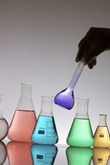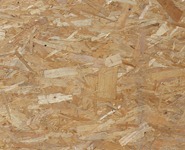The Personal Environment III: The Stuff Around Us
 In the spring of 2009, stories began to appear in the press about Chinese drywall that was so toxic that it corroded copper pipes and wiring, and made people and animals who lived in the houses where it had been installed chronically ill. Silver and brass tarnished. The air smelled like rotten eggs. Most of the inhabitants had respiratory problems and nosebleeds. Most of the time, they just felt sick.
In the spring of 2009, stories began to appear in the press about Chinese drywall that was so toxic that it corroded copper pipes and wiring, and made people and animals who lived in the houses where it had been installed chronically ill. Silver and brass tarnished. The air smelled like rotten eggs. Most of the inhabitants had respiratory problems and nosebleeds. Most of the time, they just felt sick.
When a product harms a customer, the product’s manufacturer and/or distributor often responds with something like: “It’s nothing. It’s minimal. It was the user’s fault.” In this case, that’s how the building industry behaved. In a response that should have been a parody on Saturday Night Live, Randy Noel of the Louisiana Builders Association said, “It’s a black soot on top of the copper, brass and silver. You wipe the stuff off and it looks as good as new.”
But we don’t need to look to the Chinese to supply us with toxic building  materials or other household products that can make us sick. A couple of years ago, the EPA released a report, “The Inside Story: A Guide to Indoor Air Quality.” That report said that the air in most American homes was pretty bad – or at least inferior to the air outdoors – whether the houses were in rural or industrial areas. The causes of the bad air, the EPA said, were sources like mold, radon, combustion products and volatile organic compounds (VOC’s) emitted by wood products, paints, varnishes and pesticides. Their report didn’t even include household products that add to the problem: Products like window and surface spray cleaners, or so-called “air fresheners” that may be more likely to contaminate than “freshen” the air.
materials or other household products that can make us sick. A couple of years ago, the EPA released a report, “The Inside Story: A Guide to Indoor Air Quality.” That report said that the air in most American homes was pretty bad – or at least inferior to the air outdoors – whether the houses were in rural or industrial areas. The causes of the bad air, the EPA said, were sources like mold, radon, combustion products and volatile organic compounds (VOC’s) emitted by wood products, paints, varnishes and pesticides. Their report didn’t even include household products that add to the problem: Products like window and surface spray cleaners, or so-called “air fresheners” that may be more likely to contaminate than “freshen” the air.
Where’s the Data?
But doing something about the toxins in the air around you isn’t easy, because it’s hard to get the information you need, even to get started. Getting hard information on what substances are toxic and what products contain them is so hard because there’s so little data available. How did this happen?
For the last twenty years or so, most of the substances used have not ‘tested by the EPA,’ as many chemical company statements would  have you believe. What really happens if a company wants to introduce a chemical, is that the company has the chemical tested (usually on animals) at a certified laboratory at its expense. Then, if the lab results show that there are no significant effects on the test animals in the dosages or exposures that are used in the tests, the company registers it with the EPA as an accepted chemical, and the EPA lets the company use the chemical in its products, or allows it sell the chemical to other companies to use in theirs. In other words, everybody’s on their honor.
have you believe. What really happens if a company wants to introduce a chemical, is that the company has the chemical tested (usually on animals) at a certified laboratory at its expense. Then, if the lab results show that there are no significant effects on the test animals in the dosages or exposures that are used in the tests, the company registers it with the EPA as an accepted chemical, and the EPA lets the company use the chemical in its products, or allows it sell the chemical to other companies to use in theirs. In other words, everybody’s on their honor.
But if you don’t think that the big chemical corporations who make the stuff you use are heavy on honor, you’ve got company. If you read most health and environmental websites you get a long list of terrible toxic chemicals which are present in most of the products we use in our homes.
Yes, indeed, say the chemical companies, but most of these chemicals are present in most of our products in tiny amounts. In these tiny amounts – often parts-per-million (ppm) – they don’t have toxic effects. And in these small amounts, our tests show that these chemicals are safe.
 So there we are, stuck in the middle of contradictory statements, not knowing which way to turn. There are the terrible warnings from environmental watchdogs on one side, and the reassuring statements from the chemical companies and the silence from our government agencies on the other. Trying to figure out things for ourselves is very difficult. We can’t go by the ingredients, because household products and furniture don’t come with a list of the chemicals used to make them. The list of household products maintained by the Department of Health and Human Services (HHS) does include a MSDS – the Material Safety Data Sheet. Manufacturer’s have to provide one for every chemical used. But almost invariably, the category, “Chronic Health Effects,” is followed by the statement, “The manufacturer’s Material Safety Data Sheet provides no information about health effects resulting from prolonged or frequent use of this product.” (Acute Health Effects, which are usually spelled out, are for acute contact, like drinking or having the stuff poured or splashed on you, which most of us normally manage to avoid with household products.)
So there we are, stuck in the middle of contradictory statements, not knowing which way to turn. There are the terrible warnings from environmental watchdogs on one side, and the reassuring statements from the chemical companies and the silence from our government agencies on the other. Trying to figure out things for ourselves is very difficult. We can’t go by the ingredients, because household products and furniture don’t come with a list of the chemicals used to make them. The list of household products maintained by the Department of Health and Human Services (HHS) does include a MSDS – the Material Safety Data Sheet. Manufacturer’s have to provide one for every chemical used. But almost invariably, the category, “Chronic Health Effects,” is followed by the statement, “The manufacturer’s Material Safety Data Sheet provides no information about health effects resulting from prolonged or frequent use of this product.” (Acute Health Effects, which are usually spelled out, are for acute contact, like drinking or having the stuff poured or splashed on you, which most of us normally manage to avoid with household products.)
But Here’s the Beef
 There are several things wrong with this picture: One is that these chemicals are now permeating our water supplies. While they are present in permissible amounts in any one use, like when you brush your teeth or wash your clothes or your dishes or car, all those little doses are flushed down the drain right into our water supplies. The way they are currently designed, our public water purification systems remove solid matter and bacteria but let small amounts of many chemicals through. So we’re not only using these chemicals, but we’re drinking them, and the animals and vegetables that we eat are drinking them. As a result, we have many of them sitting in our tissues – and we don’t have a clue as to what they’re doing while they’re there. But suspicions are rising that they’re up to no good.
There are several things wrong with this picture: One is that these chemicals are now permeating our water supplies. While they are present in permissible amounts in any one use, like when you brush your teeth or wash your clothes or your dishes or car, all those little doses are flushed down the drain right into our water supplies. The way they are currently designed, our public water purification systems remove solid matter and bacteria but let small amounts of many chemicals through. So we’re not only using these chemicals, but we’re drinking them, and the animals and vegetables that we eat are drinking them. As a result, we have many of them sitting in our tissues – and we don’t have a clue as to what they’re doing while they’re there. But suspicions are rising that they’re up to no good.
Those suspicions are fueling public concern about many diseases and disorders that are far more prevalent than they used to be. For example, the incidence of autism has gone from 5 in 10,000 in 1979 to 90 in 10,000 in 2005. To explain why this is happening, scientists are studying how relatively small doses of supposedly innocent chemicals can interact in our bodies can form a substance that harms us. They’re also finding that many of these chemicals are persistent. They’re not broken down to harmless chemicals in our bodies, and they don’t break down when they’re in the environment. So they’re also trying to find out if we accumulate high enough doses of these chemicals to harm us.
Again, proof of this pudding is slow in coming because there are so few studies on this issue. The chemical companies who paid for the tests they had to perform are not going to go the extra mile; they weren’t going to do any tests except the ones they needed to register their products for the market. So they’re not testing to see if we accumulate large enough doses to hurt us. They’re not testing to see if several harmless chemicals can combine in the body to make something toxic.
The lack of studies is not only due to the years 2000 to 2008, during the Bush administration, when the Environmental Protection Agency went to extra lengths to avoid upsetting the chemical corporations. These companies weren’t exactly pushed, either, by the requirements of TSCA, the original Toxic Substances Control Act passed in 1976. The act has a lot of procedures that help chemical companies stall and delay a ruling indefinitely. It also requires complex negotiations between different branches of the EPA and the chemical companies to get anything but the most basic testing done. As a result, it’s been more effective in stopping toxic chemical regulation in its tracks than in furthering the process of scientific review. A move is currently in Congress to streamline the process and make the companies more responsive to EPA demands to test for the health effects of doubtful chemicals, but whether this revision of TSCA will succeed or be buried under the current lobbying effort to defang it, is still up for grabs.
Some Culprits
Unless you live in a very old house with very old furniture and use 19th Century cleaning materials like vinegar and baking soda (which actually work very well for many purposes – see “Homemade Cleaning Products,” you are likely to be exposed to toxic chemicals in your home in at least marginally damaging doses.
 A principal culprit is the formaldehyde and other VOC’s exuded by the composite wood that fills most American houses and apartments. Composite wood like plywood and particle board is under the flooring, the siding and under the roof. Wood composites, usually covered with veneers, make up kitchen and bathroom cabinets, tables, dressers, shelving, sideboards and chairs. The glues that hold the particles in particle board together, that hold the layers of plywood together and that hold veneers to their substrates almost all currently contain VOC’s, and a lot of formaldehyde. While the bulk of the VOC’s are gassed off in the first few weeks after the wood composite is made or the furniture assembled, these compounds continue to filter into the air for many years – more slowly than at first, but still at a measurable rate. In a well-sealed home they accumulate and can make us sick. At the least, they make us less healthy.
A principal culprit is the formaldehyde and other VOC’s exuded by the composite wood that fills most American houses and apartments. Composite wood like plywood and particle board is under the flooring, the siding and under the roof. Wood composites, usually covered with veneers, make up kitchen and bathroom cabinets, tables, dressers, shelving, sideboards and chairs. The glues that hold the particles in particle board together, that hold the layers of plywood together and that hold veneers to their substrates almost all currently contain VOC’s, and a lot of formaldehyde. While the bulk of the VOC’s are gassed off in the first few weeks after the wood composite is made or the furniture assembled, these compounds continue to filter into the air for many years – more slowly than at first, but still at a measurable rate. In a well-sealed home they accumulate and can make us sick. At the least, they make us less healthy.
 There are also VOC’s seeping from our mattresses and upholstered furniture, which have been treated – as current law in most states still requires – by brominated flame retardants (BFR’s – or PBDE’s, for polybrominated diphenyl ethers). PBDEs impair development of the nervous system. The U.S. Environmental Protection Agency (EPA) noted that PBDEs are particularly toxic to the developing brains of animals and children. Peer-reviewed studies have shown that even a single dose administered to mice during development of the brain can cause permanent changes in behavior, including hyperactivity.
There are also VOC’s seeping from our mattresses and upholstered furniture, which have been treated – as current law in most states still requires – by brominated flame retardants (BFR’s – or PBDE’s, for polybrominated diphenyl ethers). PBDEs impair development of the nervous system. The U.S. Environmental Protection Agency (EPA) noted that PBDEs are particularly toxic to the developing brains of animals and children. Peer-reviewed studies have shown that even a single dose administered to mice during development of the brain can cause permanent changes in behavior, including hyperactivity.
PBDEs have also been shown to have hormone disrupting effects, particularly on estrogen and thyroid hormones. House cats, who ingest ambient chemicals for dust and furniture continuously from grooming themselves, and spend a lot of time on upholstered furniture, seem currently to be most visibly affected. Over the last twenty years, there has been an epidemic of older cats developing fatal levels hyperthyroidism. Repeatedly, tested cats with this disease are found to have extremely high levels of PBDE’s.
The requirement that all beds and furniture be made flame retardant appears, by one estimate, to have saved 213 people from igniting their beds or couches in 2006 – mostly by their own carelessness with cigarettes or candles. Instead, we have chosen to slowly poison over 300 million people and their household pets. It doesn’t seem to have been a good choice.
Most detergents, household cleaners and pesticides contain VOC’s that you breathe in and absorb through your skin, both when you’re using them, and afterward, as they evaporate from the surfaces you’ve put them on. But it’s not always the ones we know that are the worst for us. We know when we use cleaning fluid that we’re using a toxic chemical, and try to limit our exposure. But if you’re spraying the air with a scented air freshener, you don’t expect that it will contain “89 air contaminants, including ethyl acetate (toxic to the brain and nervous system), acetaldehyde (a known respiratory irritant and possible human carcinogen), and butylated hydroxytoluene (a preservative that’s toxic to the immune system and suspected of interfering with hormones).”
Most air fresheners contain these ingredients. But so do the compounds that give many products their ‘fragrance.’ This includes not only scented candles, but also scented soaps, detergents and fabric softeners. That ‘scent of spring’ that the advertiser so ardently uses to recommend a detergent for your laundry is most probably the scent of a toxic chemical mix.
These are not comforting thoughts.
What To Do?
For most of us, keeping ourselves and our families safe from toxic compounds is complicated by economics. In general, furniture, cleaning and building products that have been made with our health in mind cost more, as does furniture made from solid woods.
While we have a long way to go in the area of household chemicals, there’s been significant progress as Americans have begun to wake up to their toxic environment and started to demand safer products. There are low- (and virtually no-) VOC paints and varnishes. These used to be made by a few specialty manufacturers, but now even major paint companies like Sherwin-Williams have a full line of low-VOC paints.
The same goes for household products. Brands like Seventh Generation were once a rarity in supermarkets, which now often carry more than one line of chemically safer products. But one of the most promising routes to safer cleaning and washing stuff is being provided by a division of the EPA: the DfE, the Design for the Environment Program. The DfE has a “Continuous Technical Improvement Committee” that “screens each ingredient for potential human health and environmental effects and that—based on currently available information, EPA predictive models, and expert judgment—the product contains only those ingredients that pose the least concern among chemicals in their class.”
 Products that meet the DfE’s criteria get to display the DfE label, and are listed on the program’s site. So far, only a few common consumer products, like Shout stain remover and Palmolive dishwashing liquid, now carry the label, but as more consumers realize that choosing to buy DfE-labeled products can make a difference in their health, more manufacturers will comply. In the meantime, you, dear reader, can help yourself by choosing products that carry this label or at least choose those that claim to use non-toxic chemicals.
Products that meet the DfE’s criteria get to display the DfE label, and are listed on the program’s site. So far, only a few common consumer products, like Shout stain remover and Palmolive dishwashing liquid, now carry the label, but as more consumers realize that choosing to buy DfE-labeled products can make a difference in their health, more manufacturers will comply. In the meantime, you, dear reader, can help yourself by choosing products that carry this label or at least choose those that claim to use non-toxic chemicals.
In the case of mattresses and upholstered furniture, the requirement in most states that they be treated with flame retardants complicates the situation of anyone trying to reduce their toxic chemical load. So far, only California (2003), Washington and Maine (2008) prevent PBDE’s from being used or sold within their boundaries, but that doesn’t prevent these compounds from permeating furniture that predates those restrictions in those and the other 47 states. If the plastic covers our grandmothers often placed over their ‘best’ upholstered furniture didn’t emit other toxic chemicals, now would be the time to use them – to keep our couches from filling the air around us with invisible, almost odorless VOC’s. Covering mattresses with PBDE-free covers and covering upholstered furniture with PBDE-free fabrics will not eliminate, but will at least reduce the chemicals that would otherwise rub off on us and our pets.


